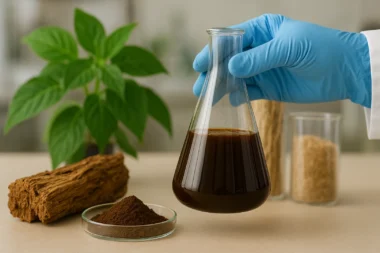Introduction
Plastic waste poses significant environmental challenges, and finding sustainable solutions for its management is crucial. Chemical recycling technology offers a promising approach by converting plastic waste into valuable chemicals. One such application is the chemical recycling of plastic waste into styrene monomers. Styrene is a crucial building block in producing various polymers and materials, including polystyrene.
The Importance of Styrene Monomers
Styrene monomers are essential chemicals used in the production of a broad range of products, like polystyrene, expandable polystyrene (EPS), acrylonitrile-butadiene-styrene (ABS), and styrene-butadiene rubber (SBR). These materials find applications in packaging, construction, automotive, electronics, and many other industries. However, the traditional production of styrene relies heavily on fossil resources and has a significant environmental impact. Chemical recycling offers an innovative and sustainable approach to producing styrene monomers using plastic waste as a feedstock.
Chemical Recycling Process for Styrene Monomer Production
The chemical recycling process for converting plastic waste into styrene monomers involves several key steps. While specific technologies may vary, the following provides a general overview of the process:
Feedstock Preparation
The plastic waste, typically consisting of various plastics, is collected, sorted, and processed to remove impurities such as contaminants, additives, and other non-relevant materials. The waste is then shredded or granulated to achieve the desired particle size for subsequent processing.
Pyrolysis or depolymerization
Pyrolysis is the primary process of breaking down plastic waste into constituent molecules. In this step, the waste is subjected to high temperatures without oxygen, causing thermal degradation and breaking the polymer chains. This results in the production of smaller hydrocarbon molecules, including styrene monomers.
Separation and purification
After the pyrolysis process, the mixture of gases, liquids, and solids is separated. Styrene monomers are typically found in the liquid fraction and other hydrocarbon compounds. Various separation techniques, such as distillation, solvent extraction, or selective adsorption, are employed to isolate and purify the styrene monomers from the other components in the mixture.
Refining and quality enhancement
The purified styrene monomers may undergo further refining and treatment to enhance their quality and remove any remaining impurities or undesired byproducts. This step may involve additional purification processes, such as distillation or filtration, to achieve the desired purity level and quality for subsequent utilization.
Utilization and Applications
The resulting styrene monomers can be utilized as valuable feedstock in producing various materials and products. They are the foundation for synthesizing polystyrene, EPS, ABS, SBR, and other styrene-based polymers. These materials find applications in packaging, insulation, consumer goods, automotive parts, and more, contributing to various industries.
Benefits of Chemical Recycling for Styrene Monomer Production
Resource conservation and waste reduction
Chemical recycling of plastic waste into styrene monomers offers a sustainable solution to reduce waste and promote resource conservation. By transforming plastic waste into valuable chemicals, the process diverts plastic waste from landfills and incineration, helping to minimize environmental impacts.
Energy Efficiency and Carbon Footprint Reduction
Chemical recycling processes like pyrolysis can be energy-efficient and potentially generate surplus energy. Using plastic waste as a feedstock reduces the dependence on fossil resources traditionally used for styrene production. This results in a significant reduction in greenhouse gas emissions and the overall carbon footprint.
Circular Economy and Sustainability
Chemical recycling contributes to developing a circular economy by enabling the reuse of plastic waste as a valuable resource. It helps close the loop by converting plastic waste into styrene monomers, which can then be used to produce new materials and products. This circular approach promotes sustainability and reduces the demand for virgin fossil-based resources.
Reduced Environmental Impact
Chemical recycling technology offers an environmentally friendly alternative to traditional styrene production. It reduces the reliance on fossil resources, decreases the release of greenhouse gases, and mitigates the environmental impact associated with plastic waste disposal.
Challenges and Considerations
Feedstock composition and quality
The structure and quality of the plastic waste input greatly influence the chemical recycling process’ efficiency and effectiveness. Variations in the types of plastics, additives, and contaminants can affect the pyrolysis process, separation, and purification steps. Therefore, consistent and reliable feedstock supply and proper waste management practices are essential considerations.
Technological Development and Optimization
Chemical recycling processes, especially the pyrolysis step, are still under development and require further optimization. Research and development efforts are focused on improving the process’s efficiency, scalability, and cost-effectiveness. Advancements in catalysts, reactor design, and process control systems are being explored to enhance the performance of the technology.
Market Demand and Economics
The commercial viability and adoption of chemical recycling for styrene monomer production depend on market demand and economic factors. The availability and cost of plastic waste feedstock and the market value and need for recycled styrene monomers are crucial considerations. Collaboration between waste management companies, chemical manufacturers, and end-users is essential to establishing a robust supply chain and market for recycled styrene monomers.
Regulatory Framework and Public Perception
Developing a supportive regulatory framework specific to chemical recycling processes is essential for ensuring recycled styrene monomers’ safety, quality, and compliance. Regulations should address feedstock quality standards, product safety, and environmental impact assessments. Public perception and acceptance of chemical recycling as a sustainable solution for plastic waste management also play a vital role in driving policy changes and fostering support for the technology.
Future Outlook and Conclusion
Chemical recycling of plastic waste into styrene monomers holds significant promise for a more sustainable approach to styrene production. As research and development efforts continue, technological advancements, feedstock management, and process optimization are expected to enhance the chemical recycling process’s efficiency, scalability, and economic viability. Collaboration between stakeholders, including waste management companies, chemical manufacturers, policymakers, and consumers, will be crucial for scaling up the technology and establishing a robust supply chain.
Using chemical recycling for styrene monomer production addresses the environmental challenges posed by plastic waste and contributes to developing a circular economy and reducing greenhouse gas emissions. By leveraging plastic waste as a valuable resource, chemical recycling technology offers a sustainable solution to transform the way styrene is produced, promoting a more sustainable future for the plastics industry and waste management.



